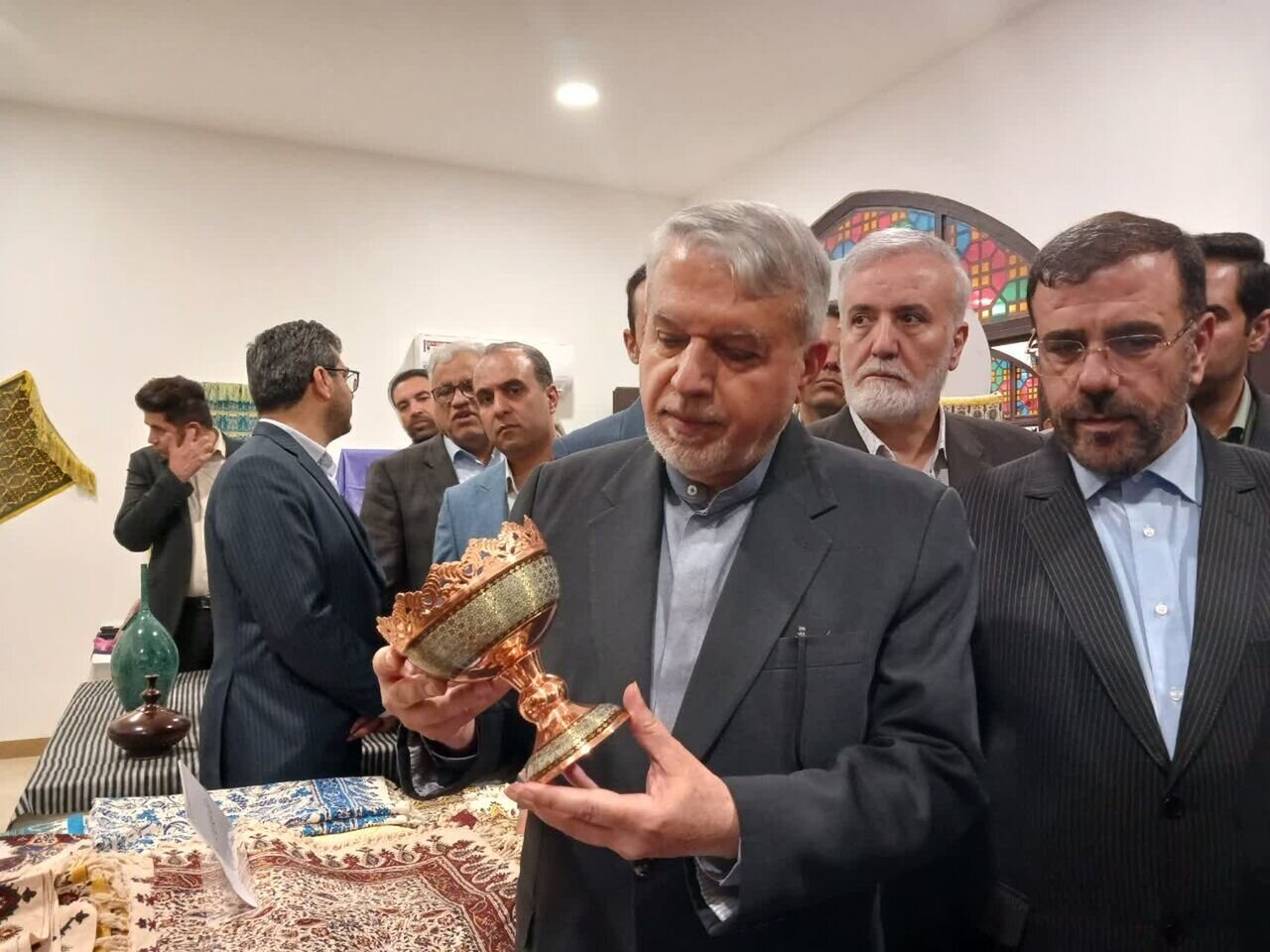Tourism minister inaugurates multi-storey bazaar of handicrafts in Shiraz
SHIRAZ- In a grand ceremony on Thursday evening, the Minister of Cultural Heritage, Tourism, and Handicrafts, Seyyed Reza Salehi-Amiri, officially inaugurated the Art Bazaar of Shiraz, amid hopes to promote traditional handicrafts and visual arts in the ancient city. The inauguration was attended by prominent officials, including Fars Governor-General Hossein-Ali Amiri, Deputy Minister of Cultural


SHIRAZ- In a grand ceremony on Thursday evening, the Minister of Cultural Heritage, Tourism, and Handicrafts, Seyyed Reza Salehi-Amiri, officially inaugurated the Art Bazaar of Shiraz, amid hopes to promote traditional handicrafts and visual arts in the ancient city.
The inauguration was attended by prominent officials, including Fars Governor-General Hossein-Ali Amiri, Deputy Minister of Cultural Heritage Ali Darabi, Shiraz Mayor Mohammad-Hassan Asadi, and Ali Hemmati, Director of Iran Tourism Development Corporation, along with guests from the cultural heritage and tourism sectors.
During the ceremony, the tourism minister Salehi toured various booths and shops, engaging directly with artisans, most of whom were also the creators of the handicrafts on display.
According to the minister, the opening of the multi-storey complex, designed to support local artisans in Shiraz and the Fars province, marks a significant achievement in the region’s recognition as a “City of Handicrafts” by the World Crafts Council.
Speaking to the Tehran Times correspondent and other journalists present at the event, the minister said: “By the end of the Seventh National Development Plan, employment in the country’s handicrafts sector should reach one million people.”
Salehi-Amiri stated, “Currently, over 500,000 individuals across the 31 provinces of the country are engaged in handicraft production.”
He added, “According to the Seventh Development Plan, we are required to create 100,000 jobs annually in this field so that by the end of the five-year plan, this figure reaches one million.”
Referring to the opening of the Art Bazaar, Salehi-Amiri added, “The creativity of Iranian men and women is truly remarkable…”
He also mentioned his meeting with officials from various handicraft sectors, saying: “The challenges and issues they face can generally be mentioned in three main areas, which must be addressed.”
He outlined these as: job security and insurance, financial facilities, and the expansion of job opportunities and marketing as the most important issues in the country’s handicraft sector.
Speaking at the event, Amiri, the governor-general, expressed his gratitude to the minister, highlighting his dedication to preserving and promoting the cultural heritage of Fars province. He acknowledged that Salehi-Amiri had prioritized the region from the beginning of his tenure, evidenced by his frequent visits and initiatives to boost local tourism and heritage. The governor also noted the unique heritage of Fars, emphasizing its rich blend of religious, cultural, and ancient artifacts spanning over 3,000 years, which contribute to its status as a hidden treasure poised for economic and social development.
The bazaar, which spans a 2,000-square-meter area and features a total floor space of approximately 5,000 square meters, includes more than 60 commercial units showcasing an impressive array of traditional arts. The focus is on handicrafts native to Shiraz and Fars frovince, such as woodwork, including the intricate marquetry, carving, and inlaying techniques Shiraz is famous for. Other showcased crafts include traditional Persian marquetry, metal engraving, and painting on wood. Additionally, the market offers visitors a glimpse into the vibrant handicrafts from other parts of Iran.
The Art Bazaar of Shiraz features booths dedicated to classic Persian art forms, such as the famed seven-color tilework, pottery, and ceramics. Jewelry, with pieces made from gold, silver, and semi-precious stones, and crafts like glass fusion, traditional illumination, and decorative calligraphy, also have dedicated spaces within the complex.
Other units cater to traditional Persian carpet-weaving, tribal textiles like kilims and gabbehs, and fashion items like traditional costumes, and leatherwork artifacts.
A notable feature of the market is its inclusion of handicrafts from other Iranian regions, such as a section devoted to items from Khuzestan province and the Arvand Free Zone, broadening the cultural appeal and diversity of offerings.
Salehi Amiri’s visit to Shiraz also included a pilgrimage to the revered shrine of Ahmad bin Musa al-Kazim, commonly known as Shah Cheragh, where he was formally welcomed by local dignitaries.
The inauguration ceremony was coincided with the 3rd International Multimedia Festival of Cultural Heritage, scheduled to conclude on Friday.
AM
